#custom ruby on rails development services
Explore tagged Tumblr posts
Text
Ruby vs Ruby on Rails: Find Out The Differences - RORBits
If you're wondering whether Ruby and Ruby on Rails are the same, you're not alone. Many people are curious about the differences between the two. Ruby and Ruby on Rails, while related, serve distinct purposes. Discover all the key differences between Ruby and Ruby on Rails here.

#ruby on rails development#ruby on rails development company#ruby on rails company#ruby on rails development services#offshore ruby on rails development#ruby on rails development agency#ruby on rails development india#ruby on rails development firm#custom ruby on rails development services#ruby on rails development company usa#ruby on rails development company in india#ruby on rails development company india#hire ruby on rails development company#offshore ruby on rails development company#ruby on rails development new york#hire ruby on rails development companies#top ruby on rails development company#ruby on rails development companies in india#rails development companies#rails development company#ruby development company#rails company#rails development#ruby development#ruby on rails development companies#ruby on rails companies#ruby on rails web development#best ruby on rails companies#ruby on rails agency#ruby on rails consulting
0 notes
Text
#website development#ai solutions#custom software development#mobile application development#ui ux design#reactjs#javascript#figma#html css#generative ai#gen ai#ai writing#llm#ai technology#artificial intelligence#seo services#web development#flutter app development#hiring#ruby on rails development company#internship#freshers#career#job
0 notes
Text
How to Develop a P2P Crypto Exchange and How Much Does It Cost?
With the rise of cryptocurrencies, Peer-to-Peer (P2P) crypto exchanges have become a popular choice for users who want to trade digital assets directly with others. These decentralized platforms offer a more secure, private, and cost-effective way to buy and sell cryptocurrencies. If you’re considering building your own P2P crypto exchange, this blog will guide you through the development process and give you an idea of how much it costs to create such a platform.
What is a P2P Crypto Exchange?
A P2P crypto exchange is a decentralized platform that allows users to buy and sell cryptocurrencies directly with each other without relying on a central authority. These exchanges connect buyers and sellers through listings, and transactions are often protected by escrow services to ensure fairness and security. P2P exchanges typically offer lower fees, more privacy, and a variety of payment methods, making them an attractive alternative to traditional centralized exchanges.
Steps to Develop a P2P Crypto Exchange
Developing a P2P crypto exchange involves several key steps. Here’s a breakdown of the process:
1. Define Your Business Model
Before starting the development, it’s important to define the business model of your P2P exchange. You’ll need to decide on key factors like:
Currency Support: Which cryptocurrencies will your exchange support (e.g., Bitcoin, Ethereum, stablecoins)?
Payment Methods: What types of payment methods will be allowed (bank transfer, PayPal, cash, etc.)?
Fees: Will you charge a flat fee per transaction, a percentage-based fee, or a combination of both?
User Verification: Will your platform require Know-Your-Customer (KYC) verification?
2. Choose the Right Technology Stack
Building a P2P crypto exchange requires selecting the right technology stack. The key components include:
Backend Development: You'll need a backend to handle user registrations, transaction processing, security protocols, and matching buy/sell orders. Technologies like Node.js, Ruby on Rails, or Django are commonly used.
Frontend Development: The user interface (UI) must be intuitive, secure, and responsive. HTML, CSS, JavaScript, and React or Angular are popular choices for frontend development.
Blockchain Integration: Integrating blockchain technology to support cryptocurrency transactions is essential. This could involve setting up APIs for blockchain interaction or using open-source solutions like Ethereum or Binance Smart Chain (BSC).
Escrow System: An escrow system is crucial to protect both buyers and sellers during transactions. This involves coding or integrating a reliable escrow service that holds cryptocurrency until both parties confirm the transaction.
3. Develop Core Features
Key features to develop for your P2P exchange include:
User Registration and Authentication: Secure login options such as two-factor authentication (2FA) and multi-signature wallets.
Matching Engine: This feature matches buyers and sellers based on their criteria (e.g., price, payment method).
Escrow System: An escrow mechanism holds funds in a secure wallet until both parties confirm the transaction is complete.
Payment Gateway Integration: You’ll need to integrate payment gateways for fiat transactions (e.g., bank transfers, PayPal).
Dispute Resolution System: Provide a system where users can report issues, and a support team or automated process can resolve disputes.
Reputation System: Implement a feedback system where users can rate each other based on their transaction experience.
4. Security Measures
Security is critical when building any crypto exchange. Some essential security features include:
End-to-End Encryption: Ensure all user data and transactions are encrypted to protect sensitive information.
Cold Storage for Funds: Store the majority of the platform's cryptocurrency holdings in cold wallets to protect them from hacking attempts.
Anti-Fraud Measures: Implement mechanisms to detect fraudulent activity, such as IP tracking, behavior analysis, and AI-powered fraud detection.
Regulatory Compliance: Ensure your platform complies with global regulatory requirements like KYC and AML (Anti-Money Laundering) protocols.
5. Testing and Launch
After developing the platform, it’s essential to test it thoroughly. Perform both manual and automated testing to ensure all features are functioning properly, the platform is secure, and there are no vulnerabilities. This includes:
Unit testing
Load testing
Penetration testing
User acceptance testing (UAT)
Once testing is complete, you can launch the platform.
How Much Does It Cost to Develop a P2P Crypto Exchange?
The cost of developing a P2P crypto exchange depends on several factors, including the complexity of the platform, the technology stack, and the development team you hire. Here’s a general cost breakdown:
1. Development Team Cost
You can either hire an in-house development team or outsource the project to a blockchain development company. Here’s an estimated cost for each:
In-house Team: Hiring in-house developers can be more expensive, with costs ranging from $50,000 to $150,000+ per developer annually, depending on location.
Outsourcing: Outsourcing to a specialized blockchain development company can be more cost-effective, with prices ranging from $30,000 to $100,000 for a full-fledged P2P exchange platform, depending on the complexity and features.
2. Platform Design and UI/UX
The design of the platform is crucial for user experience and security. Professional UI/UX design can cost anywhere from $5,000 to $20,000 depending on the design complexity and features.
3. Blockchain Integration
Integrating blockchain networks (like Bitcoin, Ethereum, Binance Smart Chain, etc.) can be costly, with development costs ranging from $10,000 to $30,000 or more, depending on the blockchain chosen and the integration complexity.
4. Security and Compliance
Security is a critical component for a P2P exchange. Security audits, KYC/AML implementation, and regulatory compliance measures can add $10,000 to $50,000 to the total development cost.
5. Maintenance and Updates
Post-launch maintenance and updates (bug fixes, feature enhancements, etc.) typically cost about 15-20% of the initial development cost annually.
Total Estimated Cost
Basic Platform: $30,000 to $50,000
Advanced Platform: $70,000 to $150,000+
Conclusion
Developing a P2P crypto exchange requires careful planning, secure development, and a focus on providing a seamless user experience. The cost of developing a P2P exchange varies depending on factors like platform complexity, team, and security measures, but on average, it can range from $30,000 to $150,000+.
If you're looking to launch your own P2P crypto exchange, it's essential to partner with a reliable blockchain development company to ensure the project’s success and long-term sustainability. By focusing on security, user experience, and regulatory compliance, you can create a platform that meets the growing demand for decentralized crypto trading.
Feel free to adjust or expand on specific details to better suit your target audience!
2 notes
·
View notes
Text
Windows or Linux? Finding Your Perfect Match in the VPS Hosting Arena
In the ever-evolving landscape of Virtual Private Server (VPS) hosting, the choice between Windows and Linux is pivotal. Your decision can significantly impact your website's performance, security, and overall user experience. At l3webhosting.com, we understand the importance of this decision, and we're here to guide you through the intricacies of choosing the perfect match for your hosting needs.
Understanding the Basics: Windows vs. Linux
Windows VPS Hosting: Unveiling the Dynamics
When it comes to Windows VPS hosting, users are drawn to its familiarity and seamless integration with Microsoft technologies. For websites built on ASP.NET or utilizing MSSQL databases, Windows VPS is the natural choice. The user-friendly interface and compatibility with popular software make it a preferred option for businesses relying on Microsoft-centric applications.
Windows VPS provides robust support for various programming languages, ensuring a versatile hosting environment. The seamless compatibility with Microsoft's IIS (Internet Information Services) enhances website performance, especially for those developed using .NET frameworks.
Linux VPS Hosting: Unleashing the Power of Open Source
On the other side of the spectrum, Linux VPS hosting thrives on the principles of open source software. The inherent flexibility and stability of Linux attract developers and businesses looking for a reliable hosting foundation. Websites built using PHP, Python, or Ruby on Rails often find Linux to be the optimal environment.
Linux's renowned security features, including the capability to customize firewall settings, contribute to a robust defense against potential cyber threats. Additionally, Linux VPS hosting typically comes at a lower cost, making it an economical choice without compromising performance.
Performance Benchmark: Windows vs. Linux
Windows Performance Metrics
Windows VPS excels in scenarios where compatibility with Microsoft technologies is paramount. The integration with .NET applications and MSSQL databases ensures optimal performance for websites that rely on these frameworks. The user-friendly interface also simplifies management tasks, providing a smooth experience for administrators.
However, it's essential to note that Windows VPS may require more system resources compared to Linux, impacting scalability and cost-effectiveness for resource-intensive applications.
Linux Performance Metrics
Linux VPS, being lightweight and resource-efficient, offers excellent performance for a wide range of applications. The open-source nature of Linux enables users to tailor the operating system to their specific needs, optimizing performance and resource utilization.
Linux excels in handling concurrent processes and multiple users simultaneously, making it an ideal choice for high-traffic websites. Its stability and ability to run efficiently on minimal hardware make it a cost-effective solution for businesses mindful of their hosting budget.
Security Considerations: Windows vs. Linux
Windows Security Features
Windows VPS prioritizes security with features like BitLocker encryption, Windows Defender, and regular security updates. The familiarity of Windows security protocols can be reassuring for users accustomed to the Microsoft ecosystem.
However, the popularity of Windows also makes it a target for cyber threats. Regular updates and a robust security posture are crucial to mitigating potential risks.
Linux Security Features
Linux VPS boasts a solid reputation for security, primarily due to its open-source nature. The community-driven development and constant scrutiny contribute to swift identification and resolution of security vulnerabilities.
The ability to customize firewall settings and the availability of robust security tools make Linux a secure choice for websites that prioritize data protection and threat prevention.
Making Your Decision: Tailoring Hosting to Your Needs
Factors Influencing Your Choice
When deciding between Windows and Linux VPS hosting, consider the nature of your website, the technologies it relies on, and your budgetary constraints. If your website is built on Microsoft-centric frameworks, Windows VPS might be the most seamless option. On the other hand, Linux VPS offers versatility, cost-effectiveness, and robust security, making it an attractive choice for many users.
Our Recommendation
At l3webhosting.com, we understand that each website is unique. Our recommendation is tailored to your specific needs, ensuring that you make an informed decision based on performance requirements, budget considerations, and long-term scalability.
Conclusion: Your Hosting Journey Begins
In the dynamic world of VPS hosting, choosing between Windows and Linux is a critical decision. Understanding the nuances of each platform allows you to make an informed choice, aligning your hosting environment with your website's specific requirements.
2 notes
·
View notes
Text
Future Trends in Ruby on Rails Web Development

In the ever-evolving landscape of web development, Ruby on Rails (RoR) continues to be a popular and powerful framework for building robust, scalable, and efficient web applications. As technology advances and market demands evolve, the future of Ruby on Rails web development holds exciting possibilities and trends that promise to shape the way developers approach projects. In this article, we delve into the emerging trends and innovations in ruby on rails development company, highlighting the role of leading ruby on rails development companies, particularly those in the USA, in driving innovation and pushing the boundaries of what is possible in web development.
Embracing Modern JavaScript Frameworks:
As JavaScript frameworks like React, Vue.js, and AngularJS gain prominence in the web development landscape, Ruby on Rails developers are increasingly integrating these technologies into their projects. By leveraging the strengths of both Ruby on Rails and modern JavaScript frameworks, developers can create dynamic and interactive user interfaces that enhance the overall user experience. Ruby on Rails development companies in the USA are at the forefront of this trend, leveraging their expertise to seamlessly integrate JavaScript frameworks into RoR applications and deliver cutting-edge solutions to clients.
Microservices Architecture and Scalability:
With the growing complexity of web applications and the need for scalability and flexibility, the adoption of microservices architecture is becoming increasingly prevalent in Ruby on Rails web development. By breaking down monolithic applications into smaller, independent services, developers can achieve greater scalability, fault isolation, and agility. Leading ruby on rails web development companies in the USA are embracing microservices architecture to build scalable and resilient applications that can easily adapt to changing business requirements and user demands.
Progressive Web Applications (PWAs):
Progressive Web Applications (PWAs) represent a significant trend in web development, offering the benefits of both web and mobile applications. By leveraging modern web technologies, including service workers, web app manifests, and responsive design principles, developers can create PWAs that deliver a fast, reliable, and engaging user experience across devices and platforms. Ruby on Rails development companies in the USA are leveraging the flexibility and power of RoR to build PWAs that combine the best features of native mobile apps with the reach and accessibility of the web.
AI-Powered Applications and Chatbots:
Artificial intelligence (AI) and machine learning (ML) technologies are increasingly being integrated into web applications to enhance functionality and user experience. In Ruby on Rails web development, AI-powered applications and chatbots are becoming more prevalent, providing personalized recommendations, automated customer support, and intelligent decision-making capabilities. ruby on rails development company usa are leveraging AI and ML technologies to build sophisticated and intelligent web applications that anticipate user needs and deliver tailored experiences.
Serverless Architecture and Function as a Service (FaaS):
Serverless architecture is revolutionizing the way web applications are built and deployed, offering greater scalability, cost-efficiency, and flexibility. With the rise of Function as a Service (FaaS) platforms like AWS Lambda and Google Cloud Functions, developers can focus on writing code without worrying about managing servers or infrastructure. Leading ruby on rails development companies in the USA are embracing serverless architecture to build lightweight, event-driven applications that can scale seamlessly in response to fluctuating workloads and user demand.
Augmented Reality (AR) and Virtual Reality (VR) Experiences:
The integration of augmented reality (AR) and virtual reality (VR) technologies into web applications is opening up new possibilities for immersive and interactive user experiences. In Ruby on Rails web development, developers are exploring ways to incorporate AR and VR features into e-commerce platforms, educational portals, and entertainment websites. Ruby on Rails web development companies in the USA are at the forefront of this trend, leveraging RoR's flexibility and versatility to build immersive AR and VR experiences that push the boundaries of traditional web development.
Conclusion:
As technology continues to evolve and market demands shift, the future of Ruby on Rails web development holds immense potential for innovation and growth. By embracing emerging trends such as modern JavaScript frameworks, microservices architecture, progressive web applications, AI-powered applications, serverless architecture, and AR/VR experiences, ruby on rails web development company usa are poised to lead the way in shaping the next generation of web applications. With their expertise, creativity, and commitment to excellence, these companies are driving innovation and pushing the boundaries of what is possible in Ruby on Rails web development.
#ruby on rails development company#ruby on rails development company usa#ruby on rails web development company usa
2 notes
·
View notes
Text
The Ultimate Guide to Web Development
In today’s digital age, having a strong online presence is crucial for individuals and businesses alike. Whether you’re a seasoned developer or a newcomer to the world of coding, mastering the art of web development opens up a world of opportunities. In this comprehensive guide, we’ll delve into the intricate world of web development, exploring the fundamental concepts, tools, and techniques needed to thrive in this dynamic field. Join us on this journey as we unlock the secrets to creating stunning websites and robust web applications.
Understanding the Foundations
At the core of every successful website lies a solid foundation built upon key principles and technologies. The Ultimate Guide to Web Development begins with an exploration of HTML, CSS, and JavaScript — the building blocks of the web. HTML provides the structure, CSS adds style and aesthetics, while JavaScript injects interactivity and functionality. Together, these three languages form the backbone of web development, empowering developers to craft captivating user experiences.
Collaborating with a Software Development Company in USA
For businesses looking to build robust web applications or enhance their online presence, collaborating with a Software Development Company in USA can be invaluable. These companies offer expertise in a wide range of technologies and services, from custom software development to web design and digital marketing. By partnering with a reputable company, businesses can access the skills and resources needed to bring their vision to life and stay ahead of the competition in today’s digital landscape.
Exploring the Frontend
Once you’ve grasped the basics, it’s time to delve deeper into the frontend realm. From responsive design to user interface (UI) development, there’s no shortage of skills to master. CSS frameworks like Bootstrap and Tailwind CSS streamline the design process, allowing developers to create visually stunning layouts with ease. Meanwhile, JavaScript libraries such as React, Angular, and Vue.js empower developers to build dynamic and interactive frontend experiences.
Embracing Backend Technologies
While the frontend handles the visual aspect of a website, the backend powers its functionality behind the scenes. In this section of The Ultimate Guide to Web Development, we explore the world of server-side programming and database management. Popular backend languages like Python, Node.js, and Ruby on Rails enable developers to create robust server-side applications, while databases such as MySQL, MongoDB, and PostgreSQL store and retrieve data efficiently.
Mastering Full-Stack Development
With a solid understanding of both frontend and backend technologies, aspiring developers can embark on the journey of full-stack development as a Software Development company in USA. Combining the best of both worlds, full-stack developers possess the skills to build end-to-end web solutions from scratch. Whether it’s creating RESTful APIs, integrating third-party services, or optimizing performance, mastering full-stack development opens doors to endless possibilities in the digital landscape.
Optimizing for Performance and Accessibility
In today’s fast-paced world, users expect websites to load quickly and perform seamlessly across all devices. As such, optimizing performance and ensuring accessibility are paramount considerations for web developers. From minimizing file sizes and leveraging caching techniques to adhering to web accessibility standards such as WCAG (Web Content Accessibility Guidelines), every aspect of development plays a crucial role in delivering an exceptional user experience.
Staying Ahead with Emerging Technologies
The field of web development is constantly evolving, with new technologies and trends emerging at a rapid pace. In this ever-changing landscape, staying ahead of the curve is essential for success. Whether it’s adopting progressive web app (PWA) technologies, harnessing the power of machine learning and artificial intelligence, or embracing the latest frontend frameworks, keeping abreast of emerging technologies is key to maintaining a competitive edge.
Collaborating with a Software Development Company in USA
For businesses looking to elevate their online presence, partnering with a reputable software development company in USA can be a game-changer. With a wealth of experience and expertise, these companies offer tailored solutions to meet the unique needs of their clients. Whether it’s custom web development, e-commerce solutions, or enterprise-grade applications, collaborating with a trusted partner ensures seamless execution and unparalleled results.
Conclusion: Unlocking the Potential of Web Development
As we conclude our journey through The Ultimate Guide to Web Development, it’s clear that mastering the art of web development is more than just writing code — it’s about creating experiences that captivate and inspire. Whether you’re a novice coder or a seasoned veteran, the world of web development offers endless opportunities for growth and innovation. By understanding the fundamental principles, embracing emerging technologies, and collaborating with industry experts, you can unlock the full potential of web development and shape the digital landscape for years to come.
2 notes
·
View notes
Text
Top Custom Software Development Companies in Europe [2025]
European companies are progressively adopting tailored software solutions to work more effectively. For organizations seeking a best-in-class custom software development partner, we present a selection of firms offering comprehensive, end-to-end services. It's vital to recognize the significant difference in the capability of various development providers to deliver genuinely effective custom software.
In order to facilitate the identification of your optimal partner, we have compiled a list of the most reputable custom software development companies in Europe, all of whom possess the capability to develop software solutions tailored to your specific business requisites.
VeryCreatives
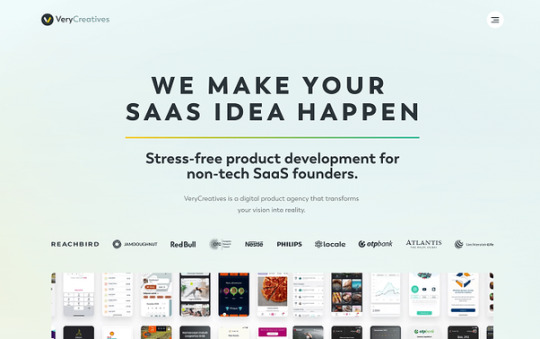
VeryCreatives, a recognized leader in design and development, empowers businesses worldwide with exceptional software solutions. Our seasoned professionals excel at attracting more potential users and converting them effectively, leading to robust customer bases, improved retention, and substantial revenue streams for our partners.
Aionys
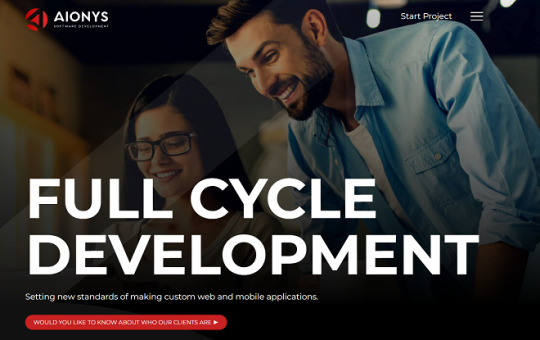
Aionys, a reputable custom software development company founded in Bulgaria in 2016, offers expert digital product development services to the financial services industry. Their strength lies in their experienced team of software developers, designers, project managers, and QA engineers, who are dedicated to delivering tailored and high-quality solutions.
instinctools
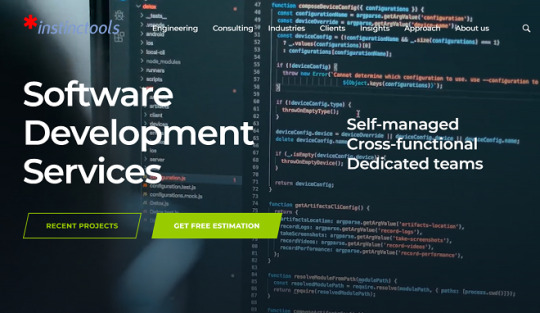
instinctools, with a history spanning over 10 years, specializes in the development of state-of-the-art software solutions designed to address unique business challenges. The company's distinctive methodological approach, coupled with the assembly of an exceptional cadre of technical talent at their Kraków headquarters in Central Europe, solidifies their position as a preeminent software firm in Poland.
Dotcode
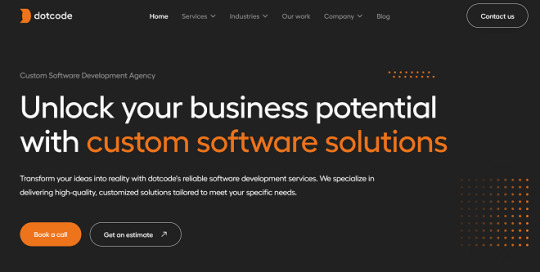
For businesses and startups in the EU market, Dotcode, a custom software development company based in Ukraine with offices in the UK and US, specializes in building dedicated development teams. Their platform showcases their successful project history, and they offer IT outsourcing services to enhance existing products and develop scalable tech solutions globally.
Sigma Software
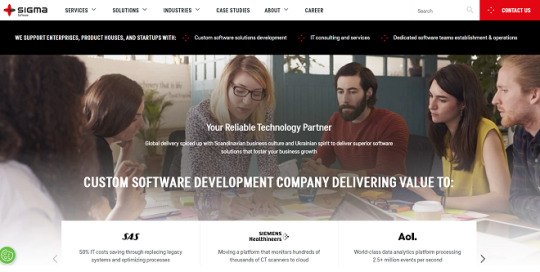
Sigma Software, founded in 2009, serves a wide international clientele, from the US to Australia, with a strong domestic and global presence. They specialize in tailored web and mobile application development and are recognized for their excellent client communication, high-quality code, and a reliable warranty period of 12 months or more.
DIGIWEDO

DIGIWEDO, a custom software development firm with a strong history, specializes in developing Minimum Viable Products (MVPs) and complete digital products for agile companies worldwide. They have expertise in Ruby on Rails for web applications and building feature-rich applications for both iOS and Android. DIGIWEDO has successfully delivered over 300 projects to clients in over 20 countries, managing the entire development lifecycle from the initial idea.
Strypes
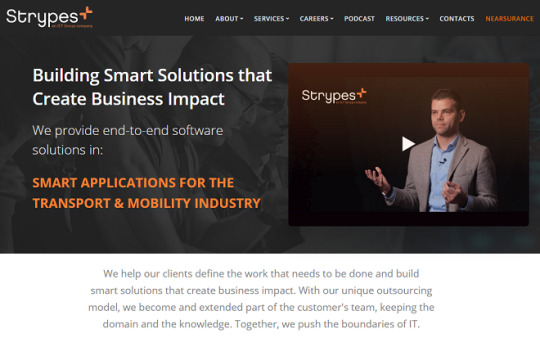
Strypes, a software house located in Eindhoven, Netherlands, provides both the establishment and management of dedicated development teams, configured to meet the bespoke requirements of its clientele, and the delivery of end-to-end projects across a range of core sectors, including IT infrastructure, Smart Applications, Remote Diagnostics and Monitoring software, Transport and Mobility, Cloud Solutions, and diverse business verticals.
CodeFirst
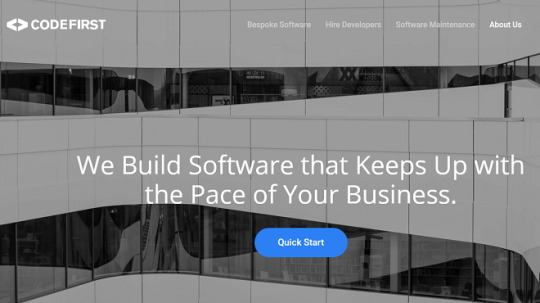
CodeFirst, a Custom Software Development Company, employs agile delivery methodologies and leverages its expertise in software development to ensure the provision of premium custom software solutions within the European market. The company is committed to delivering software products within or ahead of stipulated deadlines and at competitive pricing. Each project is regarded as an opportunity to apply the company's extensive experience, innovative solutions, and discerning intuition to consistently surpass client expectations.
#custom software development#software development#software developers#software development in Europe
0 notes
Text
How to Create a Fitness App Like Fitbit

In our health-focused society, fitness apps have become essential for anyone looking to keep tabs on and improve their well-being. One app that really shines is Fitbit, which has paved the way by providing users with a robust platform to monitor their physical activities, sleep habits, and overall health stats. If you're thinking about creating a Fitness App Like Fitbit, it's important to grasp the key elements and the development process involved.
Why Build a Fitness App Like Fitbit?
The global fitness app market is booming, thanks to a growing awareness of health and the rise of wearable tech. If you’re thinking about developing a Fitness App Like Fitbit, you’re stepping into a thriving market that provides users with tailored health tracking options. Partnering with an experienced fitness app development company ensures your app offers seamless features and builds a community that motivates users to achieve their fitness goals together.
Core Features of a Fitbit-Like Fitness App
To emulate the success of Fitbit and carve a niche in the fitness tech landscape, your app should be equipped with a robust set of features that address both physical health and user engagement. Here’s a breakdown of the most crucial elements:
User Profiles: Allow users to input personal data, set goals, and monitor progress.
Activity Tracking: Monitor steps, distance, calories burned, and active minutes.
Heart Rate Monitoring: Utilize sensors to track heart rate during various activities.
Sleep Analysis: Provide insights into sleep duration and quality.
Nutrition Logging: Enable users to record dietary intake and monitor nutritional goals.
Integration with Wearables: Ensure compatibility with devices like smartwatches and fitness bands.
Social Features: Incorporate community challenges, leaderboards, and sharing capabilities.
Notifications and Reminders: Send alerts for workouts, hydration, and goal achievements.
Tech Stack Needed to Build a Fitness App Like Fitbit
Building a scalable and responsive fitness app like Fitbit requires a carefully chosen tech stack that supports performance, integration, and security. Here's a comprehensive tech stack recommendation:
Frontend: React Native or Flutter for cross-platform development.
Backend: Node.js or Ruby on Rails for server-side operations.
Database: MongoDB or PostgreSQL for data management.
APIs: Integration with Google Fit, Apple HealthKit, or proprietary APIs for data synchronization.
Cloud Services: AWS or Firebase for hosting and real-time data processing.Custom Software Development Company
Steps to Create a Fitness App Like FitbitDeveloping a fitness app like Fitbit involves strategic planning, agile execution, and continuous improvement. Follow these steps to ensure a successful app launch:
Market Research: Analyze competitors and identify unique value propositions.
Define Features: Outline core functionalities based on user needs.
Design UI/UX: Create intuitive and engaging user interfaces.
Develop MVP: Build a Minimum Viable Product to test core features.
Testing: Conduct rigorous testing to ensure functionality and user satisfaction.
Launch: Deploy the app on relevant platforms and gather user feedback.
Iterate: Continuously update the app based on user insights and technological advancements.Custom Software Development Company
Cost to Create an App Like Fitbit
Creating a fitness app like Fitbit typically costs $30,000–$150,000, depending on design, features, platforms, integrations, and development location.
The development cost varies based on multiple factors including app complexity, core and advanced features, backend infrastructure, and the hourly rates of the development team. Costs are also influenced by platform choice (iOS, Android, or both), UI/UX design, integration with wearable devices, and technologies like GPS, Bluetooth, and AI-powered analytics. Additional expenses may include third-party API integration (e.g., Google Fit, Apple HealthKit), cloud storage, app security measures, ongoing maintenance, and post-launch support. Working with a reputable fitness app development company ensures optimized costs and timely delivery of a high-performing fitness solution.
Also Read - Top 10 Telemedicine App Development Companies in 2025–2026
How PaceXgrowth Can Help to Create an App Like Fitbit
At PaceXgrowth, we specialize in developing cutting-edge fitness applications tailored to your vision. As a trusted fitness app development company, our services include custom UI/UX design, seamless integration with wearables, real-time activity tracking, and advanced analytics.
We focus on building scalable, secure, and user-friendly apps that not only meet but exceed user expectations. From concept to launch, PaceXgrowth is your partner in creating fitness solutions that truly make an impact.
Custom Development: Building apps from scratch to meet specific requirements.
UI/UX Design: Crafting user-centric designs for enhanced engagement.
Integration Services: Ensuring seamless connectivity with various devices and platforms.
Post-Launch Support: Providing ongoing maintenance and updates.
Partnering with PaceXgrowth ensures a collaborative approach, turning your fitness app idea into a successful reality.
Conclusion
Developing a fitness app like Fitbit presents an exciting opportunity to make a significant impact in the health and wellness industry. By focusing on user needs, leveraging the right technology, and partnering with experienced developers at PaceXgrowth, you can create an app that not only meets but exceeds user expectations.
With the right strategy and support from a top-tier fitness app development company, your vision can turn into a high-performing digital product. Now is the perfect time to innovate and lead in the booming fitness tech space.
0 notes
Text
Developing an Uber Eats Delivery App Everything You Need to Build an App Like Uber

uber eats clone
Introduction
The rise of the on-demand economy has transformed the way consumers interact with services, particularly in the food delivery space. One of the most successful models to emerge from this trend is UberEats. Entrepreneurs and businesses around the world are now eager to develop an app like Uber to capitalize on the growing demand for convenient, tech-driven food delivery.
Creating an app like Uber is more than just mimicking a popular service. It’s about understanding user needs, creating intuitive experiences, and building a reliable, scalable infrastructure. In this blog, we’ll break down what it takes to develop an Uber Eats Delivery App, the must-have features, tech stack, costs, and strategies for success.
Why Build an App Like Uber?
Uber Eats didn’t become a household name by accident. It succeeded by offering convenience, speed, and reliability—three things modern consumers value most. When you aim to develop an app like Uber, you tap into a well-established ecosystem of user behavior that favors quick solutions and seamless transactions.
Here are a few compelling reasons to build an UberEats Delivery App:
High Market Demand: The global food delivery market is expected to reach $320 billion by 2029.
Scalability: With the right architecture, your app can grow from local to global.
Diverse Revenue Models: Commission, delivery fees, subscriptions, ads, and more.
User Retention: Features like loyalty programs and real-time updates keep users coming back.
Core Features of an Uber Eats Delivery App
To successfully develop an app like Uber, you’ll need to integrate key features tailored for three main user types: customers, delivery partners, and restaurants. Let’s explore the core features for each:
1. Customer App
User Registration & Login
Restaurant Discovery
Menu Browsing & Ordering
Real-Time Order Tracking
Multiple Payment Options
Ratings & Reviews
Promotions and Discounts
2. Delivery Partner App
Accept/Reject Delivery Requests
Navigation & Route Optimization
Real-Time Order Updates
Delivery History
Earnings Dashboard
3. Restaurant Dashboard
Manage Orders & Menus
Track Deliveries
View Reports and Insights
Update Business Information
4. Admin Panel
User Management
Analytics and Reports
Commission and Payouts
Promotions and Coupons
Dispute Management
By focusing on these core elements, you can build a reliable Uber Eats Delivery App that meets the needs of all stakeholders.
Tech Stack to Build an App Like Uber
The success of any digital product lies in the technology that powers it. To develop an app like Uber, you'll need a robust, scalable, and secure tech stack. Here’s a recommended setup:
Frontend:
React Native or Flutter (for cross-platform mobile apps)
Backend:
Node.js, Python (Django), or Ruby on Rails
Database:
PostgreSQL, MongoDB
Real-Time Features:
Socket.IO, Firebase, or PubNub for live order tracking
Maps & Navigation:
Google Maps API, Mapbox
Payment Gateway:
Stripe, Razorpay, PayPal
This stack supports real-time communication, secure transactions, and smooth performance across devices.
Monetization Strategies
When you build an app like Uber, it's essential to integrate strong revenue models. Here are a few effective strategies:
Delivery Fees: Charge customers per delivery
Restaurant Commissions: Take a percentage of each order
Subscription Plans: Offer premium services to users
Advertising: Promote featured restaurants
Surge Pricing: Increase delivery fees during peak hours
Cost to Develop an App Like Uber
The cost to develop an app like Uber or an UberEats Delivery App varies based on complexity, features, team location, and time to market. Here's a rough estimate:
MVP (Minimal Viable Product): $25,000 – $50,000
Fully Featured App: $75,000 – $150,000+
You can optimize costs by starting with an MVP and gradually rolling out additional features.
Challenges and How to Overcome Them
While building an app like Uber comes with its share of challenges, being aware of them can help you stay ahead:
Logistics Coordination: Use algorithms for smart routing and driver allocation
User Retention: Offer loyalty rewards and real-time notifications
Competition: Focus on user experience and niche targeting
Compliance: Ensure your app adheres to local food safety and delivery laws
Final Thoughts: Start Your Journey Now
To develop an app like Uber or launch your own UberEats Delivery App, you need vision, planning, and the right technology partner. The food delivery market is thriving, and there’s room for innovative players who can offer better value, speed, and service.
0 notes
Text
Docker For Ruby On Rails : Meaning, Benefits, & Use Cases
Discover the power of Docker for Ruby on Rails in this comprehensive guide, where we dive into its core meaning, examine its benefits, and explore practical use cases. Learn how Docker streamlines development, simplifies deployment, and enhances scalability for Ruby on Rails applications, making it an essential tool for modern web development. Whether you're new to Docker or looking to optimize your Rails projects, this guide offers valuable insights into why Docker is transforming Rails development.
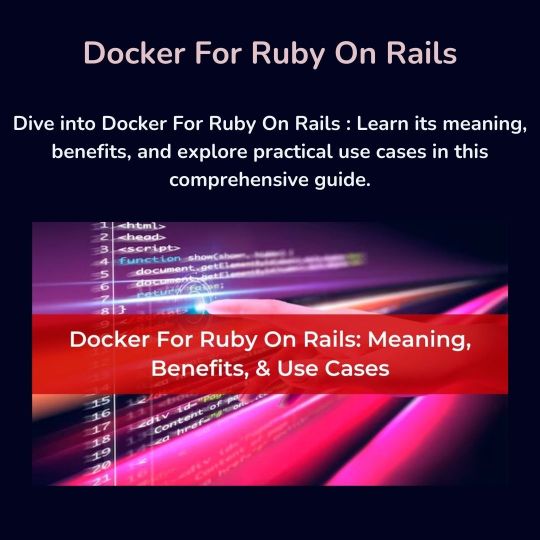
#ruby on rails development#ruby on rails development company#ruby on rails company#ruby on rails development services#offshore ruby on rails development#ruby on rails development agency#ruby on rails development india#ruby on rails development firm#custom ruby on rails development services#ruby on rails development company usa#ruby on rails development company in india#ruby on rails development company india#hire ruby on rails development company#offshore ruby on rails development company#ruby on rails development new york#hire ruby on rails development companies#top ruby on rails development company#ruby on rails development companies in india#rails development companies#rails development company#ruby development company#rails company#rails development#ruby development#ruby on rails development companies#ruby on rails companies#ruby on rails web development#best ruby on rails companies#ruby on rails agency#ruby on rails consulting
0 notes
Text
🌍 Popular Locations to set up an ODC in 2025
When establishing an Offshore Development Center (ODC), location is important. Discover which region fits your goals and why these hotspots are leading the offshore development trend. Here's an overview of popular regions:
1. Asia-Pacific: Cost-Effective & Skilled Talent
Vietnam 🇻🇳: The Rising Star
* Cost: Highly competitive (30-50% lower than Western Europe/US).
* Talent: Strong software engineering skills, growing tech ecosystem.
* Tech Stacks: Java, JavaScript, C#/.NET, Python, Go.
* Time Zone: UTC+7.
* Pros: Tax incentives, growing startup scene.
* Cons: Potential communication challenges.
India 🇮🇳: The Largest IT Hub
* Cost: Competitive but rising in major cities.
* Talent: Vast developer pool, strong SaaS industry.
* Tech Stacks: MongoDB, Express.js, React.js, Node.js, Java, C#.
* Time Zone: UTC+5:30.
* Pros: Well-developed tech parks, strong connectivity.
* Cons: Time zone differences, rising salaries.
Philippines 🇵🇭: Customer Support & IT Services
* Cost: Lower than India and Vietnam.
* Talent: Strong English proficiency, established IT infrastructure.
* Tech Stacks: Linux, PHP, Python, MongoDB, Express.js, Angular, Node.js.
* Time Zone: UTC+8:00.
* Pros: High English proficiency.
* Cons: Limited AI/blockchain expertise, BPO focus.
2. Eastern Europe: Strong Tech Talent & EU Compliance
Ukraine 🇺🇦:
* Cost: Higher than Asia.
* Talent: Strong technical skills.
* Tech Stacks: Linux, PHP, Python, JavaScript, MongoDB, .NET.
* Time Zone: UTC+3.
* Pros: Strong tech talent.
* Cons: Geopolitical instability, higher costs.
Poland 🇵🇱: EU-Based Companies
* Cost: Higher than Asia.
* Talent: Access to EU market, strong fintech innovation.
* Tech Stacks: Python, Java, JavaScript, C#, C++, PHP, .NET.
* Time Zone: UTC+2.
* Pros: EU compliance, strong talent pool.
* Cons: Higher costs.
3. Latin America: Best for US-Based Companies
Mexico 🇲🇽: Proximity & Cost-Effectiveness
* Cost: Mid-range.
* Talent: Growing IT sector, good for nearshore/onshore projects.
* Tech Stacks: Python, Java, JavaScript, Ruby on Rails, .NET.
* Time Zone: UTC-6.
* Pros: Proximity to the US, overlapping work hours.
* Cons: Higher costs than some Asian countries.
Brazil 🇧🇷: Largest IT Market in Latin America
* Cost: Mid-range.
* Talent: Strong AI/ML development, large English-speaking workforce.
* Tech Stacks: Python, JavaScript, Kotlin, Ruby on Rails, PHP, Java.
* Time Zone: UTC-3.
* Pros: Large IT market, strong AI/ML capabilities.
* Cons: Complex tax systems.
Choosing the right ODC location requires careful consideration of your specific needs and priorities.
🔗 Check out the full article here: https://saigontechnology.com/blog/offshore-development-center/

#SaigonTechnology#OffshoreDevelopmentCenter#ODC#Vietnam#India#Philippines#EasternEurope#LatinAmerica
0 notes
Text
Web Developers in Sydney
Web Developers in Sydney

The Importance of Web Developers in Sydney
Sydney is one of Australia's most technologically advanced cities, home to a bustling startup ecosystem, corporate giants, and creative agencies. As businesses compete for consumer attention, the need for skilled web developers has surged.
Web developers in Sydney don't just build websites—they craft digital experiences that align with brand goals and user expectations. They use a mix of technical expertise, creative flair, and market knowledge to design responsive, user-friendly, and performance-optimized websites. These websites not only look good but also perform well in terms of speed, usability, SEO, and conversions.
Whether it’s an e-commerce platform, a service-based website, or a custom web application, developers ensure that every aspect is tailored to meet business objectives and user needs.
Services Offered by Web Developers in Sydney
Web development is a broad field that includes a wide array of services. Most web development agencies or freelance professionals in Sydney offer the following:
Custom Website Development
Many Sydney businesses prefer custom-built websites over templated designs to stand out from the crowd. Custom websites are created from scratch with unique code, design, and functionality. This ensures a high degree of flexibility, scalability, and brand alignment.
E-commerce Development

Content Management Systems (CMS)
Platforms like WordPress, Joomla, and Drupal are popular among businesses that need to frequently update their website content. Web developers configure and customize CMS platforms, allowing clients to manage content with ease.
UI/UX Design
User interface (UI) and user experience (UX) are critical for website success. Sydney web developers often collaborate with UI/UX designers to create seamless, intuitive interfaces that keep users engaged and encourage conversions.
Mobile-Responsive Design
With over 60% of web traffic coming from mobile devices, responsive design is non-negotiable. Sydney developers ensure that websites look and function flawlessly across all screen sizes and devices.
Web Application Development
Beyond simple websites, many developers in Sydney specialize in building complex web applications—think booking systems, customer portals, and SaaS platforms—tailored to specific business needs.
SEO and Performance Optimization
A website’s success depends on visibility and speed. Web developers integrate SEO best practices and optimize site performance to ensure high search rankings and fast loading times.
Website Maintenance and Support
Once a website goes live, it needs regular updates, bug fixes, and enhancements. Many Sydney-based developers offer ongoing support to ensure optimal performance and security.
Popular Technologies Used by Sydney Web Developers

Front-End: HTML5, CSS3, JavaScript, React.js, Vue.js, Angular
Back-End: PHP, Python, Ruby on Rails, Node.js
Databases: MySQL, PostgreSQL, MongoDB
CMS Platforms: WordPress, Joomla, Drupal
E-commerce: Shopify, WooCommerce, Magento, BigCommerce
Web Hosting: AWS, DigitalOcean, SiteGround, Bluehost
The choice of technology often depends on the project scope, budget, and client preferences.
Benefits of Hiring Local Web Developers in Sydney
While outsourcing development work overseas can be cost-effective, hiring local web developers in Sydney comes with a unique set of advantages:
Better Communication and Collaboration
Time zone alignment, face-to-face meetings, and real-time communication make collaboration smoother and more efficient. Working with a local developer eliminates language barriers and ensures everyone is on the same page.
Understanding of Local Market Trends
Sydney-based developers are well-acquainted with the Australian market, consumer behavior, and regulatory requirements. This local insight is invaluable when building websites tailored for the region.
Quality Assurance
Local developers often adhere to Australian standards for accessibility, data protection, and performance. They also provide hands-on support and quicker turnaround for urgent issues.
Ongoing Support and Maintenance
Having a local point of contact for ongoing updates and troubleshooting is a major benefit. Whether it's a bug fix or a design tweak, local developers are more accessible.
How to Choose the Right Web Developers in Sydney
The success of your digital project hinges on choosing the right development team. Here’s a step-by-step guide to help you make an informed decision:
Define Your Goals
Before you approach any developer, be clear about your project goals. Are you building a brand-new site, revamping an old one, or creating an application? What are the must-have features?
Check Their Portfolio
Review the developer’s past projects to assess their design aesthetic, technical ability, and industry experience. A good portfolio is often a reliable indicator of what they can deliver.
Read Client Reviews
Check testimonials and third-party reviews on platforms like Clutch, Google, and Upwork. Look for patterns in client feedback—especially around communication, deadlines, and post-launch support.
Ask About Their Process
A reliable developer will follow a structured process that includes discovery, design, development, testing, and deployment. Ask for transparency on timelines, project milestones, and deliverables.
Discuss Budget and Timelines
Get a detailed quote and timeline upfront. Ensure there are no hidden fees and that all costs, including revisions and support, are clearly outlined.
Look for Ongoing Support
A good web development partner offers more than just a finished product—they offer long-term support to ensure your site evolves with your business.
The Future of Web Development in Sydney
The web development landscape in Sydney is constantly evolving. As new technologies emerge—like Progressive Web Apps (PWAs), artificial intelligence, and headless CMS—Sydney developers are quick to adapt. Many are also integrating accessibility standards (WCAG), sustainability principles (green hosting), and inclusive design practices into their workflows.
With Sydney’s growing reputation as a digital innovation hub, the demand for skilled web developers is expected to rise. This growth will be fueled by emerging industries, government investments in tech infrastructure, and the ongoing digital transformation of traditional businesses.
Final Thoughts
Web developers in Sydney are essential partners for businesses aiming to build a powerful online presence. From custom websites to scalable web applications, they bring a mix of technical skill and local market knowledge that delivers real results. Whether you're launching a new venture or upgrading your current digital platform, partnering with the right web developer in Sydney can make all the difference.
By doing your research, setting clear goals, and choosing a developer that aligns with your vision, you’ll be well on your way to building a standout website that drives growth, engagement, and success.
0 notes
Text
E-Learning Software Development

E-learning has transformed the education landscape, enabling learners to access resources and courses from anywhere in the world. Developing robust e-learning software requires a solid understanding of user needs, instructional design, and technology. In this post, we’ll explore the key components of e-learning software development and best practices for creating successful online learning platforms.
What is E-Learning Software?
E-learning software refers to applications designed to facilitate online education. It includes Learning Management Systems (LMS), online courses, and mobile learning apps that provide users with resources, assessments, and interactive learning experiences.
Key Features of E-Learning Software
User Registration and Profiles: Allow users to create accounts and manage their learning journey.
Course Management: Create, organize, and manage course content easily.
Multimedia Content Support: Integrate videos, images, quizzes, and interactive elements.
Progress Tracking: Enable learners to track their progress and achievements.
Assessment and Quizzes: Include quizzes and assessments to evaluate learner knowledge.
Discussion Forums: Foster community interaction and collaboration among learners.
Mobile Compatibility: Ensure accessibility on various devices.
Popular Technologies and Tools
Frontend: HTML, CSS, JavaScript frameworks (React, Angular, Vue.js)
Backend: Node.js, Python (Django/Flask), PHP (Laravel), Ruby on Rails
Databases: MySQL, PostgreSQL, MongoDB
Cloud Services: AWS, Google Cloud, Microsoft Azure for hosting and scalability
Video Hosting: Vimeo, YouTube, or custom solutions for hosting course videos
Steps to Develop E-Learning Software
Research and Planning: Identify your target audience, their needs, and course topics.
Design User Experience: Create wireframes and mockups for intuitive navigation.
Develop the Backend: Set up databases, APIs, and server-side logic.
Build the Frontend: Implement the user interface using your chosen framework.
Integrate Multimedia Content: Add videos, quizzes, and other interactive elements.
Test and Iterate: Conduct user testing and gather feedback for improvements.
Launch and Market: Deploy your application and promote it to attract users.
Best Practices for E-Learning Development
Focus on user-centered design to enhance engagement.
Ensure the platform is responsive and accessible for all users.
Incorporate gamification elements to motivate learners.
Regularly update content to keep it relevant and accurate.
Provide support and resources for users to enhance their learning experience.
Challenges in E-Learning Software Development
Ensuring a seamless user experience across devices
Managing and securing sensitive user data
Creating engaging and interactive content
Staying updated with educational standards and regulations
Providing ongoing support and maintenance for the platform
Conclusion
E-learning software development is a rewarding endeavor that can impact learners worldwide. By following best practices and focusing on user needs, you can create effective and engaging online learning experiences. Whether you are building an LMS or a simple course platform, the potential for growth and innovation in e-learning is limitless.
0 notes
Text
eCommerce Web Applications: The Digital Storefronts Driving Online Retail Growth
The retail landscape has undergone a significant transformation due to the digital revolution, with e Commerce Web Applications emerging as a cornerstone of this change. These platforms serve as the foundation of online shopping, empowering businesses to access global markets, operate around the clock, and deliver personalized experiences to customers at scale.

For both startups and established enterprises, a well-designed eCommerce web application is essential to succeeding in today’s digital economy. But what makes these applications so critical, and how do they create value for businesses and consumers alike?
What is an eCommerce Web Application?
An eCommerce web application is a dynamic online platform that enables users to browse products or services, place orders, process payments, and track deliveries—all through a web browser. Unlike static websites, these web applications are interactive and database-driven, allowing them to respond to user actions in real time and provide tailored experiences.
These applications are developed using front-end technologies such as HTML, CSS, and JavaScript, paired with robust back-end frameworks like PHP, Node.js, Python (Django), or Ruby on Rails. Popular platforms include Magento, Shopify, WooCommerce for WordPress, and custom-built systems, each offering businesses a range of solutions tailored to their specific needs.
Key Features of eCommerce Web Applications
Responsive Design
An effective eCommerce web application ensures seamless performance across all devices—desktops, tablets, and smartphones—delivering a consistent and user-friendly experience. 2. Product Management
Comprehensive admin panels enable efficient inventory and product management, from categorizing items to updating prices and stock levels. 3. Shopping Cart & Checkout
A well-designed cart system, offering multiple payment options, secure checkout, and real-time validation, ensures a smooth and hassle-free purchasing process. 4. User Accounts
Customer profiles allow users to view order history, save favorite items, and manage delivery addresses, simplifying repeat purchases and enhancing convenience. 5. Search & Filtering
Advanced search functionality and robust filtering options help users locate products quickly, optimizing usability and satisfaction. 6. Security
Features such as HTTPS encryption, two-factor authentication, and secure payment gateways are critical for safeguarding customer data and fostering trust. 7. Admin Dashboard & Analytics
Centralized dashboards provide business owners with the tools to track sales, monitor traffic, and address customer queries, streamlining operations and decision-making.
Benefits for Businesses
Global Reach: Expand your customer base by reaching audiences worldwide.
24/7 Availability: Operate around the clock, offering convenience to customers and boosting revenue potential.
Reduced Overheads: Minimize costs associated with physical stores, such as rent, utilities, and staffing.
Marketing Integration: Seamlessly incorporate SEO tools, social media, and email marketing platforms to increase visibility and drive conversions.
Future Trends
The eCommerce industry is advancing rapidly with innovations like Progressive Web Apps (PWAs), which blend the strengths of mobile apps and web platforms. Features such as offline browsing, push notifications, and fast load times are positioning PWAs as an increasingly popular choice for businesses.
Additionally, advancements in AI-driven recommendations, real-time chat support, and voice search integration are enhancing customer engagement, making eCommerce platforms more intelligent and interactive than ever before.
Conclusion
eCommerce web applications have evolved into dynamic platforms that empower businesses to grow, innovate, and build deeper connections with their customers. By adopting a strategic development approach and prioritizing user experience, businesses can leverage these platforms to establish a competitive online presence and achieve long-term success in the ever-evolving eCommerce landscape.
0 notes
Text
Choosing the Right Back-End Development Services for Your Business Needs
Imagine you’ve built a stunning storefront for your business—visually appealing, easy to navigate, and inviting. But what if the doors don’t open properly, the inventory doesn’t update, and the checkout process is painfully slow? That’s exactly what happens when a business lacks a strong back-end foundation.

Back-end development is the backbone of any digital platform, ensuring seamless operations, data management, and security. Whether you’re a startup or an established business, choosing the right back-end development services can make or break your success. In this guide, we’ll walk you through everything you need to consider before making this critical decision.
Understanding Back-End Development Services
Back-end development refers to the server-side technologies that power a website or application. Unlike front-end development, which focuses on user experience, back-end development is responsible for database management, application logic, server communication, and overall performance.
Key Components of Back-End Development:
Database Management – Storing and retrieving data efficiently
Server-Side Programming – Processing user requests and delivering responses
Security & Authentication – Protecting user data from breaches
API Development – Connecting different services and applications
Performance Optimization – Ensuring smooth and fast operations
Factors to Consider When Choosing Back-End Development Services
1. Your Business Goals & Requirements
Before selecting a back-end development service, clearly define your business needs:
Are you developing an eCommerce website, SaaS product, or a mobile app?
Do you need real-time data processing?
Will your platform require high security, such as banking or healthcare applications?
Understanding these factors helps you determine the right technology stack and service provider.
2. Technology Stack & Frameworks
Different back-end technologies cater to different business requirements. Here are some popular choices:
Node.js – Ideal for real-time applications and scalable solutions
Python (Django, Flask) – Great for AI-based applications and data-driven platforms
Ruby on Rails – Best for quick development and MVPs
Java (Spring Boot) – Reliable for enterprise-level applications
PHP (Laravel, Symfony) – Suitable for web development and CMS platforms
Choose a back-end development service that specializes in your preferred technology stack.
3. Scalability & Performance
Your business will grow, and your back-end infrastructure should support that growth. Ask yourself:
Can the system handle an increase in traffic?
Is the back-end optimized for speed and performance?
Does it support cloud integration for easy scalability?
Opt for services that provide scalable solutions and performance-driven architecture.
4. Security & Data Protection
Security breaches can be devastating. Ensure that your chosen back-end service offers:
Data encryption and secure authentication
Compliance with industry standards (GDPR, HIPAA, PCI-DSS)
Regular security audits and threat monitoring
A robust security framework will protect your business and customers from potential cyber threats.
5. Integration & API Support
A good back-end service should seamlessly integrate with third-party applications and services. This includes:
Payment gateways (PayPal, Stripe)
CRM systems (Salesforce, HubSpot)
Analytics tools (Google Analytics, Mixpanel)
APIs (Application Programming Interfaces) ensure smooth communication between different platforms and services.
6. Development Team Expertise & Support
When outsourcing back-end development, consider the team’s:
Experience & Portfolio – Review past projects and case studies
Communication & Collaboration – Ensure transparent updates and feedback
Support & Maintenance – Look for long-term support for bug fixes and updates
A reliable back-end development team will save you time, money, and headaches in the long run.
Custom vs. Pre-Built Back-End Solutions
When selecting a back-end solution, you have two main options:
1. Custom Development
Pros:
Tailored to specific business needs
Offers better scalability and flexibility
Higher security and control
Cons:
Longer development time
Higher initial cost
2. Pre-Built Solutions (BaaS - Backend-as-a-Service)
Pros:
Faster deployment
Lower upfront costs
Includes built-in security features
Cons:
Limited customization
May not support all business requirements
If your business needs a unique and scalable infrastructure, custom development is the way to go. However, if you need a quick and cost-effective solution, a BaaS platform like Firebase or AWS Amplify might be a better fit.
Final Thoughts
Choosing the right back-end development services is a crucial decision that can impact your business’s growth, security, and performance. By evaluating your business needs, selecting the right technology stack, and prioritizing security and scalability, you can ensure a strong foundation for your digital platform.
Whether you go for a custom-built solution or a pre-packaged backend service, always partner with experienced professionals who understand your vision. After all, a solid back-end is what keeps your business running smoothly behind the scenes.
0 notes
Text
Revolutionizing Digital Presence with Web Application Development by Zerone Consulting Private Limited
In an era where digital transformation is paramount to business success, having a robust and functional web application can set companies apart. Zerone Consulting Private Limited offers top-tier web application development services that help businesses leverage cutting-edge technologies to enhance customer engagement, streamline operations, and drive growth. With a focus on delivering innovative, user-friendly, and scalable web applications, Zerone Consulting ensures that each project aligns perfectly with client goals while maximizing efficiency.
Zerone Consulting’s web application development services are designed to help businesses build powerful and customized web solutions that meet the unique needs of their industry. Whether it’s an e-commerce platform, customer portal, or an internal enterprise solution, Zerone’s expert team brings years of experience to create highly functional and secure web applications that support long-term success.
Comprehensive Web Application Development Process
At Zerone Consulting, the web application development process follows a structured, client-focused approach that ensures successful project outcomes. This approach is designed to provide clear communication, flexibility, and timely delivery of high-quality solutions. The process involves several critical stages:
Requirement Analysis and Consultation: The process begins with detailed consultations where Zerone’s team works closely with the client to understand business objectives, target audience, and specific requirements. This stage is crucial in determining the features and functionalities that the web application should offer. The team ensures that the application aligns with business needs, user expectations, and industry standards.
Design and Prototyping: Following the requirement analysis, Zerone Consulting’s UI/UX design team takes over to create visually appealing and user-friendly designs. Emphasis is placed on creating intuitive interfaces and smooth navigation flows, ensuring that users can easily interact with the application. Zerone’s designers develop prototypes and wireframes, allowing clients to preview and provide feedback before development begins.
Development and Integration: Once the design is approved, the development phase kicks off. Zerone Consulting uses modern web technologies and frameworks like React, Angular, and Vue.js for frontend development, ensuring responsive and engaging user interfaces. For backend development, technologies like Node.js, Ruby on Rails, and Python are used, ensuring seamless integration with databases, APIs, and other third-party tools. The development team focuses on building scalable and secure applications that perform efficiently, even as the user base grows.
Quality Assurance and Testing: Zerone Consulting is committed to delivering web applications that meet the highest standards of performance, security, and usability. To ensure this, each application undergoes rigorous quality assurance (QA) testing. The QA team conducts functionality tests, user acceptance testing (UAT), load testing, and security checks to identify and resolve any issues. The goal is to deliver a flawless application that works seamlessly across different devices and platforms.
Deployment and Maintenance: Once testing is complete, the web application is ready for deployment. Zerone Consulting handles the deployment process, ensuring that the application is launched without any issues. The team also provides ongoing maintenance and support to ensure that the application remains up-to-date, secure, and fully functional. This includes adding new features, updating security patches, and making necessary improvements based on user feedback.
Technologies and Expertise
Zerone Consulting utilizes a wide range of technologies to ensure that each web application is built to last and can meet the evolving needs of businesses. The company stays up-to-date with the latest industry trends and tools to deliver innovative solutions that help clients stay ahead of the curve. Key technologies used by Zerone Consulting include:
Frontend Development: React.js, Angular, Vue.js, HTML5, CSS3, JavaScript, Bootstrap
Backend Development: Node.js, Python, Ruby on Rails, PHP, Java, .NET
Databases: MySQL, PostgreSQL, MongoDB, Firebase
Cloud Services: AWS, Microsoft Azure, Google Cloud
API Integration: RESTful APIs, SOAP APIs, third-party API integrations
DevOps and CI/CD: Jenkins, Docker, Kubernetes, GitLab CI
Why Choose Zerone Consulting for Web Application Development?
Zerone Consulting offers comprehensive web application development services that help businesses build scalable, secure, and high-performance web applications. Here are some reasons to choose Zerone Consulting for your web development needs:
Customization: Zerone provides fully customized web applications designed to address the unique requirements of each business. Whether it’s a custom feature or a specific user flow, Zerone ensures that every aspect of the application is built to suit client needs.
Expert Team: The team at Zerone Consulting consists of highly skilled developers, designers, and testers who are experienced in building web applications across various industries. Their expertise ensures that clients get the best possible results from their web solutions.
Agile Methodology: Zerone follows agile development practices, enabling faster project delivery with flexibility to accommodate changing requirements. This approach ensures that clients receive a product that aligns with their expectations.
End-to-End Services: Zerone offers end-to-end services, from requirement analysis and design to development, testing, deployment, and ongoing support. This holistic approach ensures clients receive comprehensive solutions that meet all their web application needs.
Security and Scalability: Security and scalability are top priorities for Zerone Consulting. The company ensures that each web application is secure from threats, while also being designed to scale as the business grows.
Conclusion
Zerone Consulting Private Limited provides businesses with exceptional web application development services that drive growth and enhance digital transformation. By leveraging the latest technologies and a structured, client-centric approach, Zerone ensures that each web application is tailored to meet the unique needs of the business. With a focus on quality, security, and scalability, Zerone Consulting is the ideal partner for businesses looking to build innovative and high-performance web applications.
0 notes